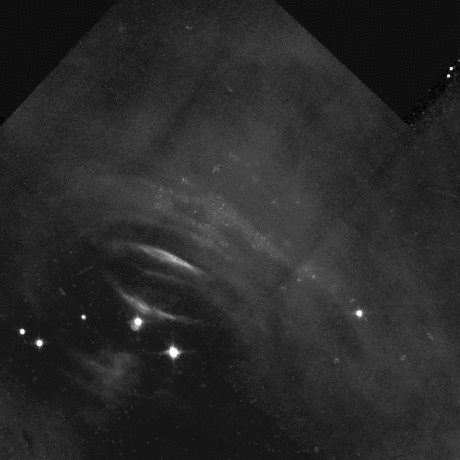|
talk abbout all the HOTTEST stars here, the sexiest and the uggos, the up and comers and the old burnouts that are gonna implode under their own mass. stars are neat - and get this, you are made of them.
|
|
|
|

|
| # ? Apr 25, 2024 10:46 |
|
* The Sun is a Miasma of Incandescent Plasma.
|
|
|
|
, a gigantic nuclear furnace
|
|
|
|
|
|
|
|
Lawman 0 posted:
i disagree, i looked directly at it and i can't see a loving thing
|
|
|
|
hbag posted:i disagree, i looked directly at it and i can't see a loving thing wow modern day presidential
|
|
|
|
hbag posted:i disagree, i looked directly at it and i can't see a loving thing Maybe some binoculars would help?
|
|
|
|
Eta carinae is a good star, it's what happens when you ask "how big can a star get, really?" One of the things that happens is its atmosphere says gently caress you gravity, I do what I want  
|
|
|
|
Every time I hear about Eta Carinae or Betelguese or one of those other fat old fucks I just want to know when its going to blow itself to hell. Wanna see a supernova.
|
|
|
|
it it true that there are some stars that are shooting tremendous amounts of energy out of their poles and the energy travels so far it is possible we could one day be wiped out by a star's laser beam?
|
|
|
|
Flavius Aetass posted:it it true that there are some stars that are shooting tremendous amounts of energy out of their poles Not normal stars, you only get beaming like that from compact objects like neutron stars. That's what pulsars are: we're picking up the electromagnetic radiation being beamed out of the magnetic poles of neutron stars, and as they rotate we observe the pulses as the beam sweeps over us. quote:and the energy travels so far it is possible we could one day be wiped out by a star's laser beam? You might be thinking of gamma-ray bursts, which aren't a steady-state phenomenon and instead come (probably) from the collapse of certain types of stars into a black hole, or the disruption of those stars by a black hole. If one occurred within several thousand light years of Earth, with the beam pointed to hit Earth, then you could get effects on life (not wiping it all out, though), but a GRB has never been observed in our galaxy and it's not even known if they're possible in the Milky Way's stellar population.
|
|
|
|
the sun is a giant piece of poo poo
|
|
|
|
Ughh give me that Betelgeuse explosion baby I'm almost there
|
|
|
|
|
Skeleton Ape posted:Eta carinae is a good star, it's what happens when you ask "how big can a star get, really?" One of the things that happens is its atmosphere says gently caress you gravity, I do what I want big balls, tiny dick
|
|
|
|
Eta Carinae is cool. It's actually a binary star system, and what you're seeing is the Homunculus nebula surrounding the system. The nebula was created very recently (in astronomical terms) in the 19th century during an event called "the great eruption" where one of the stars in the system, a blue supergiant, underwent an almost-supernova. In 1843, Eta Carinae was the second brightest star in the night sky, and would stay that way for 18 years before fading from view. https://www.youtube.com/watch?v=s4q68iis1p0
|
|
|
|
What we call the "surface" of the sun is just where the mean free path of escaping photons is long enough to reach us. The mean free path is the average distance a photon can travel before being absorbed, so inside the sun they go a centimeter, get absorbed, get emitted, go 1 more cm, get absorbed, etc. Eventually this becomes long enough that the photon makes it to our eyes, and that part of the sun, where the density is just right to allow this, is what we call the surface. The thing is that this mean free path is different for different wavelengths of light, and the sun emits a full spectrum. This means that the "surface" of the sun is at a different radius if you look at blue light compared to red light, compared to xrays, compared to radio waves. You can make an argument that we live inside the sun depending on how you define its size.
|
|
|
|
As the great scientists Smash Mouth once said, we might as well be walking on the sun.
|
|
|
|
przybylski’s star is my favourite weirdo https://en.wikipedia.org/wiki/Przybylski%27s_Star
|
|
|
|
Base Emitter posted:Every time I hear about Eta Carinae or Betelguese or one of those other fat old fucks I just want to know when its going to blow itself to hell. Actually, they are younglings.
|
|
|
|
mediaphage posted:przybylski’s star is my favourite weirdo some other weirdo and/or cool stars Tabby's Star aka the alien megastructure star https://en.wikipedia.org/wiki/Tabby%27s_Star SGR 1806-20 - a magnetar 50,000 light years away that had a starquake which "released more energy in one-tenth of a second than the Sun releases in 150,000 years." this ionized the earth's atmosphere and even blinded the Swift telescope. https://en.wikipedia.org/wiki/SGR_1806%E2%88%9220 TYC 7037-89-1 - a triple binary star system (sextuple system) recently discovered by TESS  https://exoplanets.nasa.gov/news/1672/discovery-alert-first-six-star-system-where-all-six-stars-undergo-eclipses/
|
|
|
|
hot young stars
|
|
|
|
Stars have a pretty narrow range of mass. They can be .1 solar masses up to about 300 solar masses, or 10^29 kg up to 10^32kg. Anything outside of this range is too small to fuse hydrogen or too big and it can't keep all the gas in. Stars have an enormous range of sizes. This is because a star's radius depends on the mass to the 4th power, and a star can have a volume that is a billion times more than the sun. A little bit of mass makes a big difference for the radius of the star.
|
|
|
|
Phanatic posted:Not normal stars, you only get beaming like that from compact objects like neutron stars. That's what pulsars are: we're picking up the electromagnetic radiation being beamed out of the magnetic poles of neutron stars, and as they rotate we observe the pulses as the beam sweeps over us. Pulsars are nuts. Something the size of a city spinning at 10s to 1000s of RPM, and it weighs as much as a star. Here's the Crab   
|
|
|
George posted:hot young stars Nubile neighborhood nebulae just want to BLOW! click here to find the hotties in your local galactic cluster
|
|
|
|
|
Aaaaa double post sorry
|
|
|
|
|
George posted:hot young stars speaking of https://twitter.com/BadAstronomer/status/1364611587001241600
|
|
|
|
fuckkkkkkkkkkkk
|
|
|
|
VY Canis Majoris isn't even considered the largest known star anymore. According to Wikipedia, it's currently Stephenson 2-18, which is wider than the orbit of Saturn.
|
|
|
|
https://twitter.com/galaxy_map/status/1364937825884524545
|
|
|
|
karmicknight posted:* The Sun is a Miasma of Incandescent Plasma.
|
|
|
|
This video about star sizes is a little out of date, but still pretty cool.
|
|
|
|
I love how everyone thinks the sun is yellow, because like 99% of the time you see it is in the early morning/late afternoon when it's close to the horizon and the light is being scattered harder. It's actually white: 
|
|
|
|
the rare nightime sun pic
|
|
|
Shwoo posted:VY Canis Majoris isn't even considered the largest known star anymore. According to Wikipedia, it's currently Stephenson 2-18, which is wider than the orbit of Saturn. oh whatttttt thanks! i didn't know this!
|
|
|
|
Shwoo posted:VY Canis Majoris isn't even considered the largest known star anymore. According to Wikipedia, it's currently Stephenson 2-18, which is wider than the orbit of Saturn. VY Canis Majoris also got refined down quite a bit in size. At one point it was estimated to be up to 2100 Solar Radii, but got downgraded to around 1400 with newer measurements. Edit: Also I think it's still often trotted out as the largest stars because a lot of the others high on the list are much less refined size estimates. wilderthanmild fucked around with this message at 20:58 on Feb 26, 2021 |
|
|
|
|
Brown dwarfs are the coolest thing in space and I love them but I can't really hype them up super well so I'll just leave it at "brown dwarfs get smaller as they gain mass" and that rules.
|
|
|
|
Tulip posted:Brown dwarfs are the coolest thing in space and I love them but I can't really hype them up super well so I'll just leave it at "brown dwarfs get smaller as they gain mass" and that rules. Brown dwarves are neat because we keep confusing them with planets.
|
|
|
|
I mean, they do exist in a blurry spot between planets and stars so it makes sense that people would confuse them with planets a bit. But yea, I always found them really interesting too.
|
|
|
|
|
I watched a lecture about brown dwarves but the only thing I remember is that they outnumber stars by a huge amount, and that smaller stars are orders of magnitude more common than larger stars. Also, the lecturer put in a photograph of a car that they drove off a small cliff while visiting the observatory where they did their research and that was pretty funny. Apparently they didn't know how to drive stick lol
|
|
|
|

|
| # ? Apr 25, 2024 10:46 |
|
How do we know all this poo poo about stars and space in general? How do we know the composition of stars thousands of light years away? How do we know a starquake 50,000 years ago was the source of the ionosphere expanding in 2004?
|
|
|


































